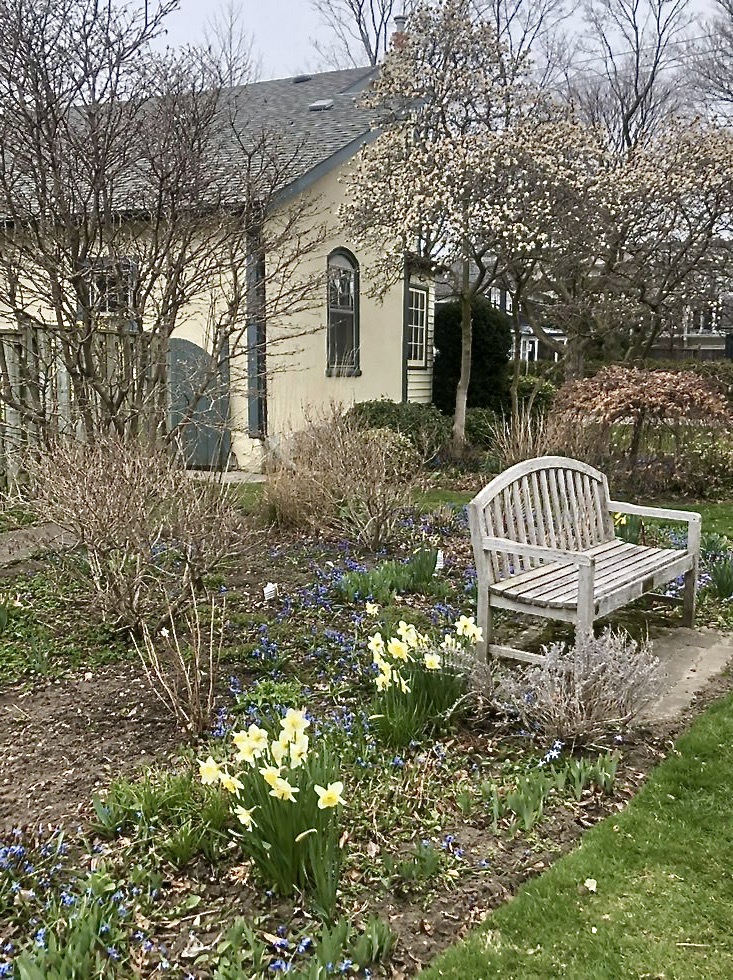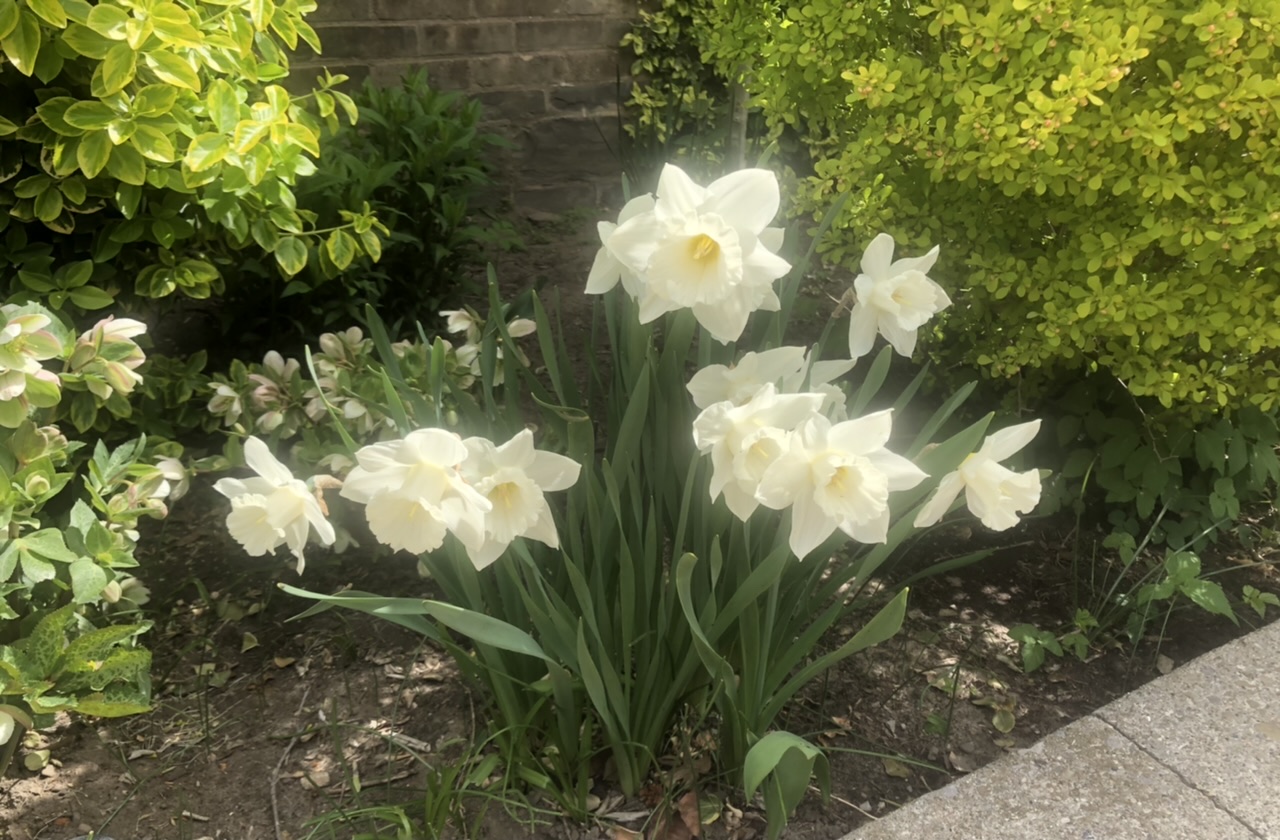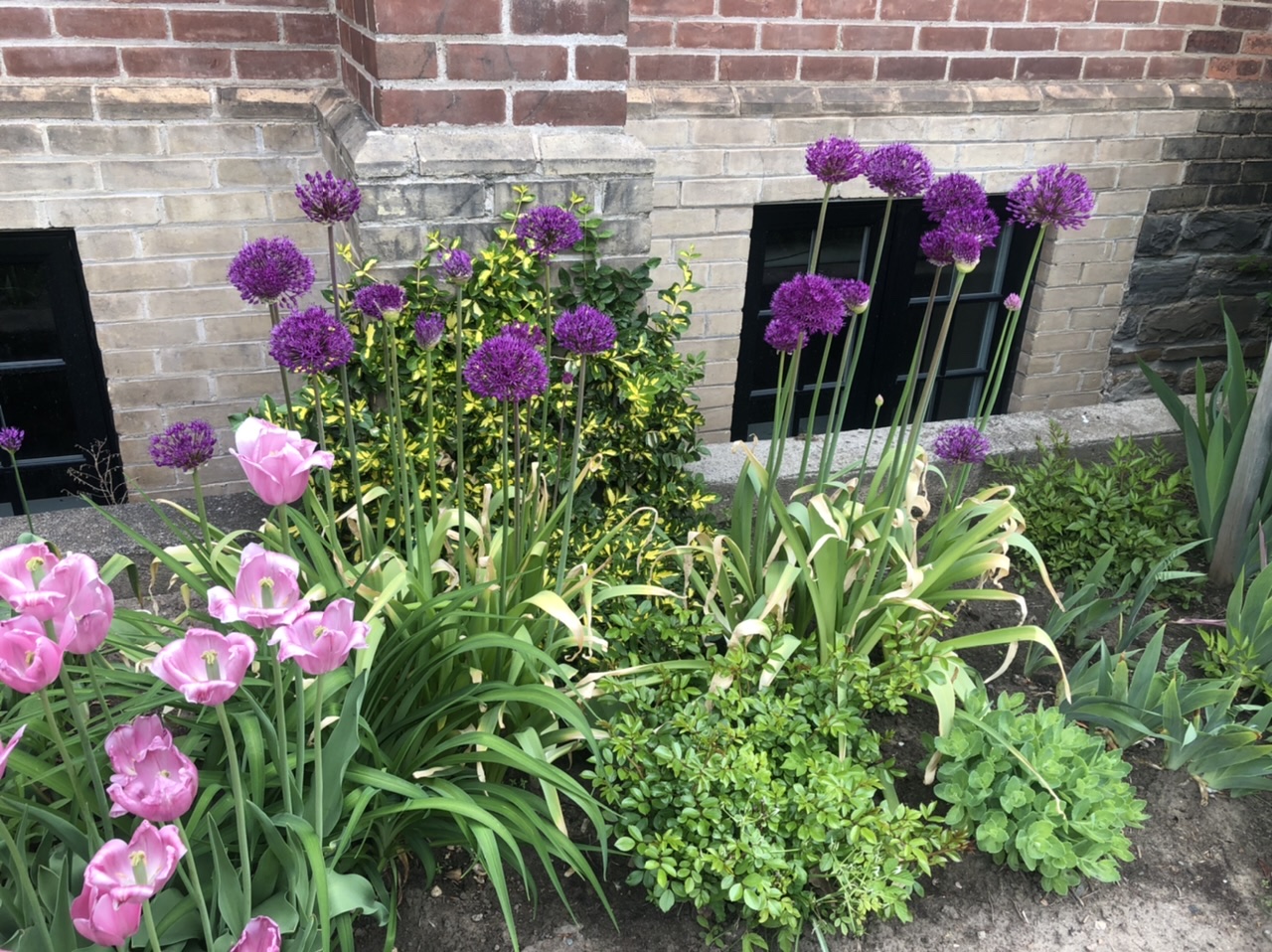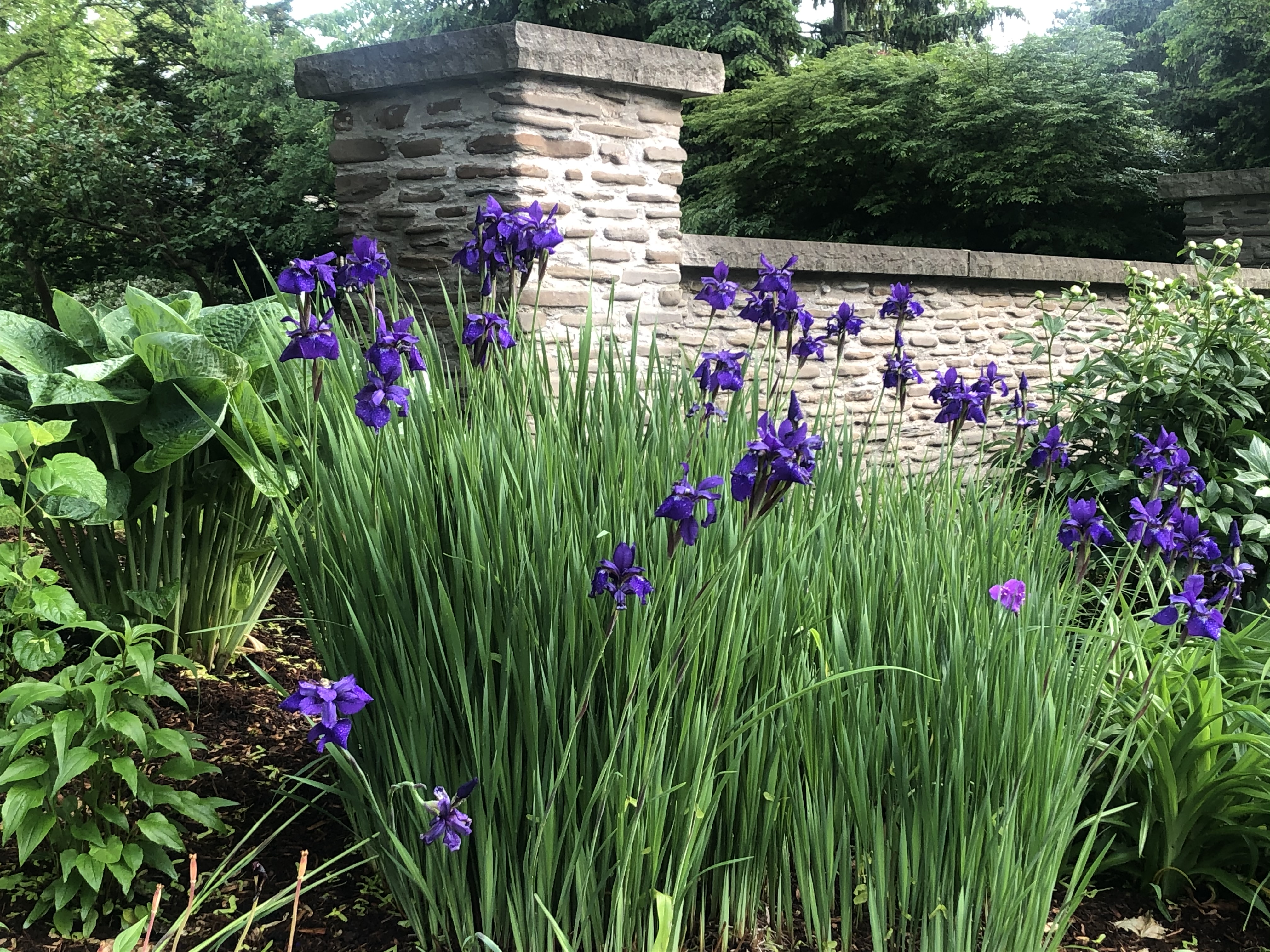
Flowering bulbs are one of the glories of the spring season, and as long as you can work the ground (generally up to the end of November), you can put in an array of bulbs to create a fantastic display.
First, plan the planting!
Some bulbs require full sun, defined as at least six hours of direct sun per day. Some are bred for shady or partial shade. Think of those lovely woodland gardens that have carpets of English bluebells.
Consider planting somewhere that might be shaded in the height of summer but will have enough sun before the leaves come out to support a sun-loving bulb variety.
For maximum impact, avoid the rigid-looking plantings that have red tulips looking like soldiers on parade.
The best spring gardens have bulbs planted in attractive clusters, with a minimum of 12 bulbs. Try to plant in groups of 3 or 5: odd numbers appeal more to the eye.
For a more casual, naturalized look, and certainly under trees, cast your bulbs out in an arc to mimic how nature would spread them as they come back year after year.

Tulips, muscari, narcissi (daffodils), crocuses, hyacinths, and allium come in multiple colours and are all part of the gardener's spring palette.
When thinking about colour combinations, a good place to start is the classic mix of purple muscari and yellow daffodil, deep purple hyacinths and white early tulips, or showy double pink tulips and white narcissi.
Consider staging your bulbs by early (April) mid (May) and late flowering (June) so you have a continual display of flowers right into summer. Flowering times will be clearly indicated on the package of bulbs. Also important to consider is the height of your flowering bulbs: you don’t want to hide a glorious display of romantic pink ruffled Angelique tulips (flowers mid to late spring) behind your hedge!
Consult the gardening catalogues to understand what will grow in our climate zone (Oakville falls into climate zone 6: in contrast, Vancouver is in 8 and Thunder Bay is in 3, considerably colder) Consider purchasing a package of bulbs already selected for coordinated colour and staggered blooming times.

Next, prepare the soil.
Ideally, you need soil with good drainage: you don't want those precious bulbs to rot because they are too wet, so avoid areas of your garden that have reoccurring puddles after it rains. Then loosen up the ground, digging about 10" -12" down, breaking up clumps as you go.
Bulbs need fertilizer, and the best, most environmentally sensitive way to provide it is to add a layer of organic compost.
The best bulbs are plump and firm with no visible signs of disease or withering. The bigger the bulb, the bigger the flower. It is preferable to purchase your bulbs from a reputable local garden centre where you can actually see and handle the bulbs before you buy, or order from a respected online source.
When planting, it's best to follow the nursery's directions on the package, but a good rule of thumb is to plant the bulb to a depth of 3 times its size. That way, it will be less likely to be disrupted by a spring frost and rise to lie on the soil surface into the waiting arms of ravenous squirrels.
There is no guaranteed way to discourage squirrels from making a buffet of your carefully planted bulbs but planting them deep enough and adding bone and blood meal (which also acts as fertilizer) is a good start. Water well after planting to encourage root growth and cover them with a light layer of mulch (compost or leaf mould).

After the bulbs have finished blooming, let them die back naturally. It may be tempting to cut the yellowing foliage, but that is how the plant is regenerating itself for next year's beautiful display. A common technique used in our Garden to hide the unsightly foliage is to have plants with large leaves, like hostas, grow up between the clusters of bulbs.
About The Garden Guild of St. Jude's
The Garden Guild of St. Jude's celebrates its 40th anniversary in 2023! We are always seeking volunteers, and you don't have to have any prior gardening knowledge. Everything is provided for you, including gardening gloves and tools. The time commitment is only a couple of hours each week, extending from April to November. We average about 25 active gardeners at any one time, who range from novice to experienced to those who actually had their own gardening business at one time. What we have in common is our shared commitment to the care and continued flourishing of our beloved garden. Come and tour the garden and perhaps you will get the urge to dig in the dirt with us!
Contact Ronnie at [email protected] for more information. Article written by Cheryl Young.